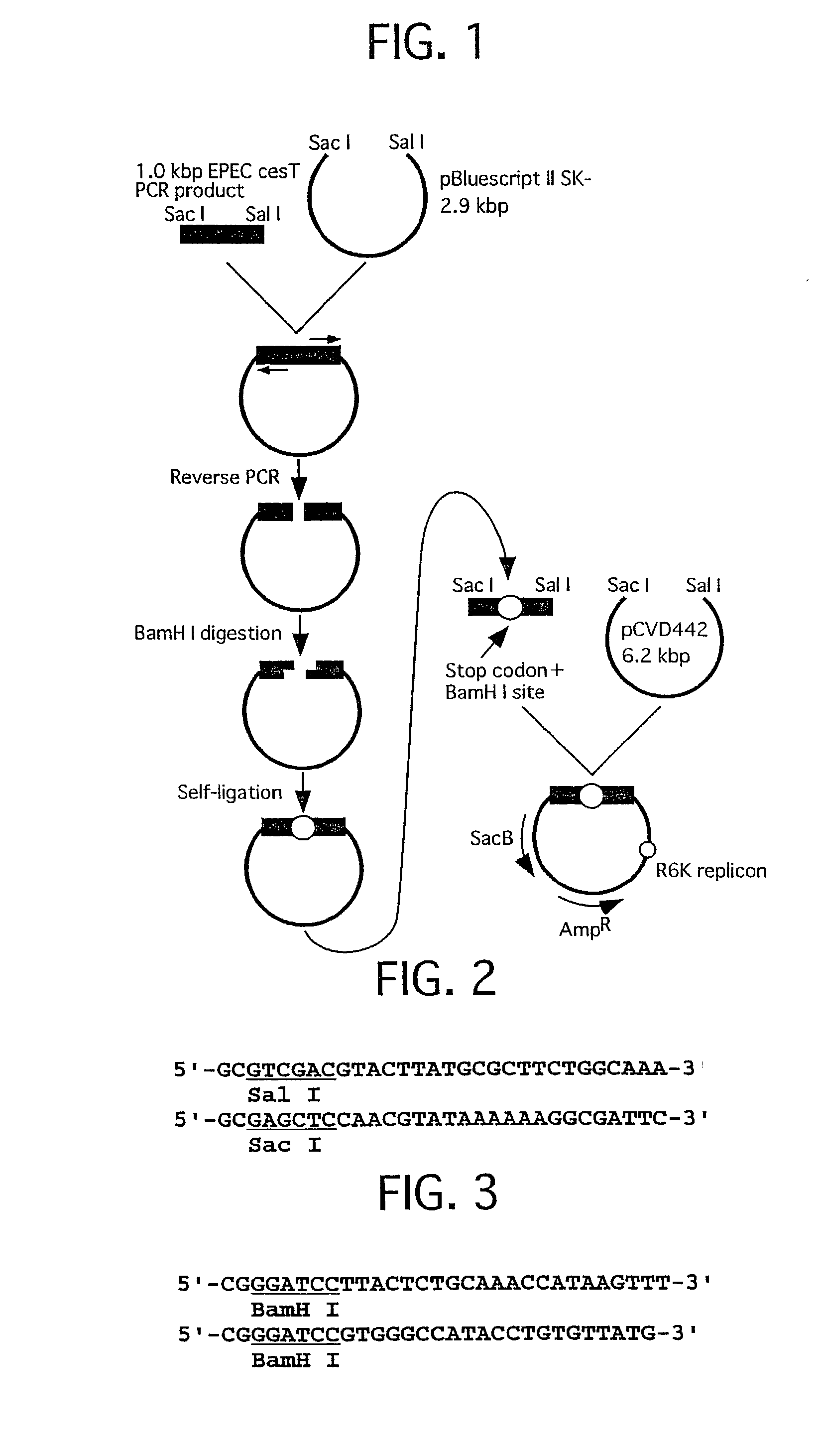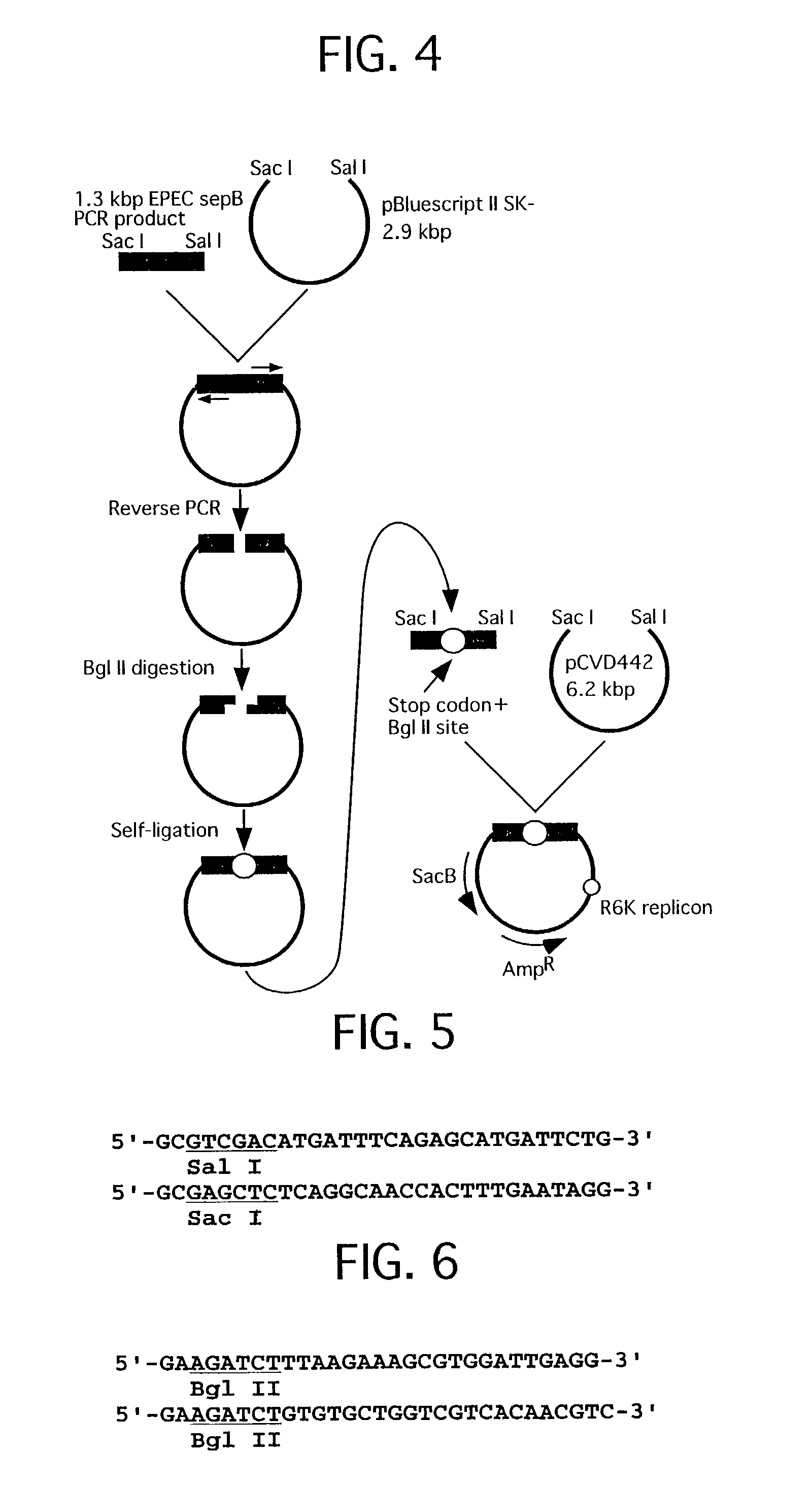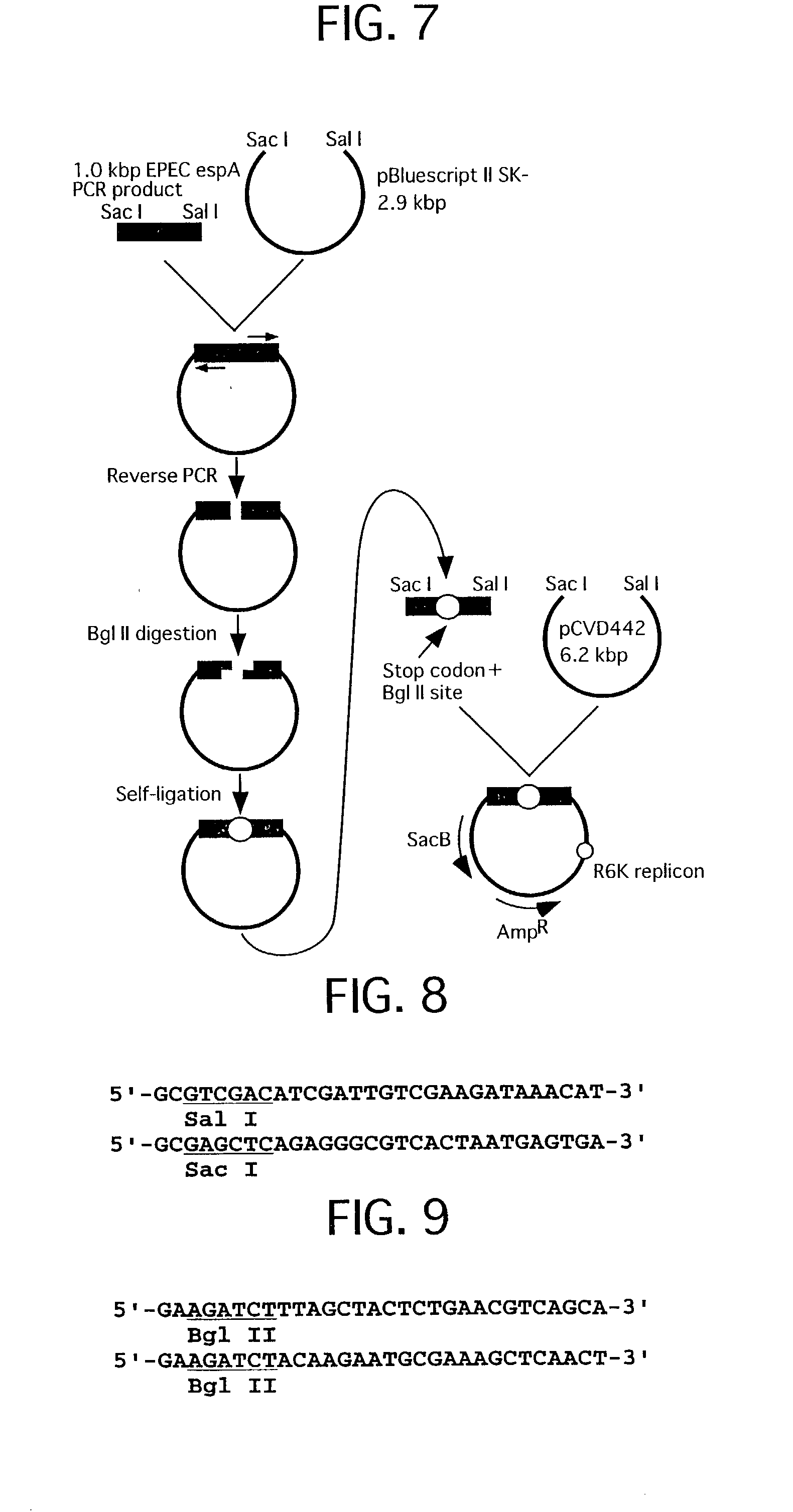Method for detecting substances inhibiting the bacterial type III secretion mechanism and function of secretory proteins thereof
- Summary
- Abstract
- Description
- Claims
- Application Information
AI Technical Summary
Benefits of technology
Problems solved by technology
Method used
Image
Examples
referential example 1-1
[0045] EPEC cesT defective strain: Tir specific chaperone defective strain (Molecular Microb. 33, 1162-1175, 1999); obtainable from Dr. Abe, Akio, The Kitasato Institute, 9-1, Shirokane 5-chome, Minato-ku, Tokyo, Japan
[0046] Preparation of defective strain was performed by previously established procedure (Molecular Micro. 33, 1162-1175, 1999. FIG. 1 shows outlines of plasmid construction used for preparation of EPEC cesT deficient strain. FIG. 2 shows a primer set for amplification of the gene used for the recombinant plasmid construction. FIG. 3 shows a primer set for inserting a terminal codon and BamHI site by reverse PCR which is used for the recombinant plasmid construction.
[0047] Preparation of a Recombinant Plasmid Used for Obtaining EPEC cesT Defective Strain
[0048] EPEC E2348 / 69 chromosomal DNA 0.5 .mu.g was added to a solution 100 .mu.l of 25 mM TAPS buffer (pH 9.3, 25.degree. C.), 50 mM KCl, 2 mM MgCl.sub.2, 1 mM 2-mercaptoethanol, 0.2 mM dNTP, 0.5 .mu.M primer set (refer...
referential example 1-2
[0059] EPEC sepB Defective Strain
[0060] EPEC sepB defective strain: a strain lacking type III secretory mechanism (Proc. Natl. Acad. Sci., USA 92, 7996-8000, 1995; obtainable from Center for Vaccine Development and Department of Microbiology and Immunology, University of Maryland School of Medicine, U.S.A., Dr. James B. Kaper).
[0061] Preparation of Recombinant Plasmid Used for Obtaining EPEC sepB Defective Strain
[0062] FIG. 4 shows a construction of a recombinant plasmid used for preparation of EPEC sepB defective strain. FIG. 5 shows a primer set for amplifying gene used for the construction of the recombinant plasmid. FIG. 6 shows a primer set for inserting a termination codon and a BglII site by the reverse PCR used for construction of the recombinant plasmid.
[0063] EPEC E2348 / 69 chromosomal DNA 0.5 .mu.g was added to a solution 100 .mu.l of 25 mM TAPS buffer (pH 9.3, 25.degree. C. ), 50 mM KCl, 2 mM MgCl.sub.2, 1 mM 2-mercaptoethanol, 0.2 mM dNTP, 0.5 .mu.M primer set (refer to ...
referential example 1-3
[0073] EPEC espA Defective Strain
[0074] EPEC espA defective strain: a strain lacking type III secretory protein espA (Molecular Microb., 20, 313-323, 1996; obtainable from Biotechnology Laboratory, University of British Columbia, Canada, Dr. B. Brett Finlay or Dr. Abe, Akio, The Kitasato Institute, Sirokane 5-9-1, Minato-ku, Tokyo, Japan.
[0075] Preparation of Recombinant Plasmid Used for Obtaining EPEC espA Defective Strain
[0076] FIG. 7 shows a construction of a plasmid used for preparation of EPEC espA defective strain. FIG. 8 shows a primer set for amplifying gene used for the construction of the recombinant plasmid. FIG. 9 shows a primer set for inserting a termination codon and a BglII site by the reverse PCR used for construction of the recombinant plasmid.
[0077] EPEC E2348 / 69 chromosomal DNA 0.5 .mu.g was added to a solution 100 .mu.l of 25 mM TAPS buffer (pH 9.3, 25.degree. C. ), 50 mM KCl, 2 mM MgCl.sub.2, 1 mM 2-mercaptoethanol, 0.2 mM dNTP, 0.5 .mu.M primer set (refer to F...
PUM
 Login to View More
Login to View More Abstract
Description
Claims
Application Information
 Login to View More
Login to View More - R&D Engineer
- R&D Manager
- IP Professional
- Industry Leading Data Capabilities
- Powerful AI technology
- Patent DNA Extraction
Browse by: Latest US Patents, China's latest patents, Technical Efficacy Thesaurus, Application Domain, Technology Topic, Popular Technical Reports.
© 2024 PatSnap. All rights reserved.Legal|Privacy policy|Modern Slavery Act Transparency Statement|Sitemap|About US| Contact US: help@patsnap.com










